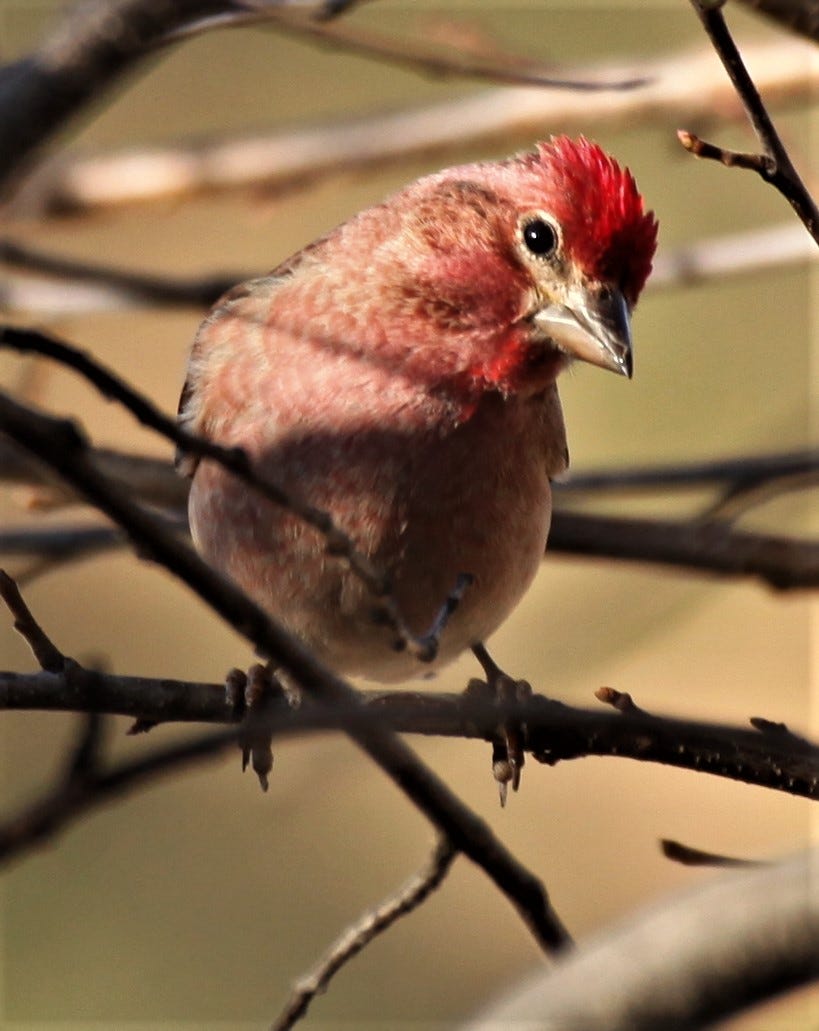February 14, 2023
Valentine’s Day. Male Cassin’s finches show their passion by blushing red. “Red!” I hear Lola, the cabaret performer and drag queen in Kinky Boots, shout. “Red! Is the color of sex!”
In birds, feather coloration comes from two kinds of pigments: melanins and carotenoids. Melanins give plumages their blacks and browns and grays, colors derived from deposited granules found in even fossil feathers dating back 160 million years. Carotenoids produce the vivid oranges and scarlet reds—the colors love. Since birds cannot synthesize these pigments, they must obtain them from their diet—from seeds and the fruits of pyracantha in the case of Cassin’s finches.
But today, something unusual among the dozen or more Cassin’s briskly and efficiently (dexterously?) hulling sunflower seeds with their thick, short bills.
A yellow male.
Maybe it was something he ate...or didn’t eat.
Male Cassin’s finches normally sport an attractive raspberry red crown and breast. What the drab, brown-patterned (camouflaged?) females find alluring as breeding season approaches. But on rare occasions, a male may show yellow instead. When the birds molt, their diet determines the colors of their new feathers. Pale orange or yellow, rather than the usual studly red, according to experimental studies, means insufficient amounts of carotenoids from food.
Like, too much junk food.
Which tells me if you’re looking for a hot date this Valentine’s Day, stay away from the Cheez-Its and Little Debbie Cosmic Brownies.
And please pass the kale chips.


Happy Valentine’s Day!
Thanks for subscribing! So much more to come!






Poor little guy! And the start of a great children’s book.
Poor guy! I think he's handsome, even with his golden coloring!